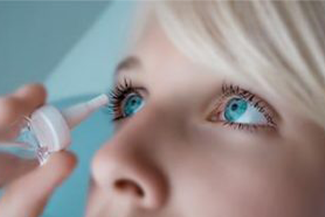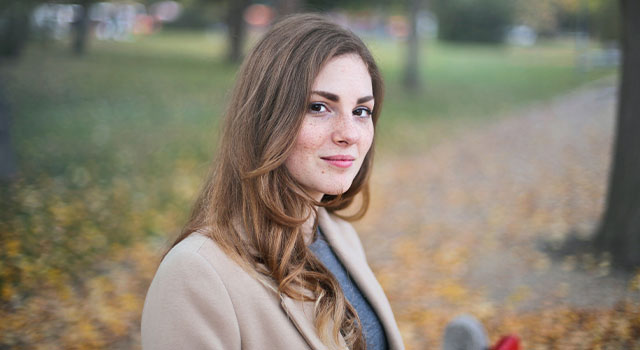
Dr. Dax Eckard is proud to be your dry eye expert in . We’ve compiled a quick interview with Dr Eckard on the subject of how his practice diagnoses and treats dry eye syndrome, and who is most likely to need dry eye intervention. Want to know more? Take a look below:
Q: Dr. Eckard, how would you define a dry eye workup? Is it the same as a dry eye exam?
A: In our practice, we do a separate dry eye assessment or dry eye workup that’s not part of the normal vision-related exam. We bring the patient back to specifically focus on their ocular surface, their tear film, their lid and lash area, their meibomian, or oily glands, as we call them, and then the areas of the white of the eye, or the cornea, where you see most of the dryness, regardless of what their symptoms are.
So we devote pretty much that work up to just that front area of the eye outside of their normal, comprehensive eye exam.
Q: What are you looking for and what tests do you run for dry eye at your eye clinic?
A: During our dry eye exam we do imaging of the patient’s oil glands, called the meibomian glands, inside the top and bottom eyelids, to see how healthy they are. We’ll aslo do an assessment of the cornea and the white of the eye with various colored dyes, kind of a yellowy fluorescene dye and a greenish die to look for areas that may be problematic.
We look at the patient’s eyelid and lash area for buildup little demodex mites that live in the eyelashes and can cause dry eye symptoms if they get out of control.
We assess the redness of the eye, what the blood vessels look like on the white of the eye, and how inflamed they are.
A lot of this exam is just taking a good, thorough history of what the patient’s symptoms are, what is bothering them? What do they notice day in, day out, and what type of treatments have they already been using with their eyes?
Our eye care team tries to get a little bit of a history of systemic things that are going on with the patient and what type of medications they take. It can really affect the dryness of their eyes if they have hormone issues, if they take glaucoma medications or allergy medications or high blood pressure medication, a lot of the side effects of these things can make dry eyes worse.
So we kind of delve into those things very specifically on the dry eye workup.
Q: And how long would a dry workup normally take?
A: Total time is usually around 30 minutes to 45 minutes. By the time we do the work up and go over the questions and do our testing. Though a lot of that depends on if the patient has any questions or concerns that need to be addressed, which might cause the workup to take a bit longer.
Q: What kind of dry eye treatments are on offer at your eye clinic?
A: Many times we’ll start with over-the-counter solutions, either by providing them at the office, or pointing the patient to where they can find them on their own.
We often talk to our patients about omega-3 supplements to help with oil production from the meibomian glands. There are also good eyelid scrubs and some over the counter heating masks the patient can wear to heat up the meibomian glands and get the oils from those glands flowing more freely on their own. We also recommend the usual over-the-counter artificial tears, tear gels and even some thicker lubricant ointments that are used at bedtime for more severe cases.
Moving over to prescriptions and in-office procedures, for cases in which the tears are running out of the eye too quickly, we offer a procedure called punctal occlusion, in which we block the part of the eye called the punctum, preventing the tears from draining out as quickly, keeping them on the eye (and moisturizing the eye) longer. Temperature radio frequency is another newer popular procedure, in which the meibomian gland is heated using radio waves, rejuvenating the glands and helping them flow better.
We may also prescribe cyclosporine drops such as Restasis, Zydra and Sequa. The newest thing that we offer is the temperature radio frequency, which is a heat treatment. We also do some referrals for Atalaga serum that we don’t do in the office, but we monitor and manage that with clinics that will draw the patient’s blood and spin it down to its plasma and have their own autoimmune type drop for dryness that they’ll use.
In some cases we may prescribe amniotic membrane therapy, which is a regenerative tissue we’ll place over a dry irritated cornea to help it promote regenerative healing, kind of like stem cells to the corneal surface that we do for a period of several days to a week.
These are just some of the treatments that we do or prescribe in-office. All of it depends on the patient’s dry symptoms, and how severe they are.
Q: What role does insurance play in dry treatment?
A: This will vary a little bit, based on the patient’s medical insurance. Most vision plans do not cover any type of dry eye treatment, since these are deemed medical. But we found that most medical insurance will cover a portion, if not all of the dry assessment and work up.
And then some insurance, depending on the patient’s drug plans, may have coverage for some of the prescription medications like prostasis.
A lot of medical insurances do help cover the blocking of the tear ducts, the drainage ducts and the punctual occlusion that I mentioned earlier.
Q: Who do you think should get a dry workup?
A: Any patient that has any symptoms of dry eye, which could be burning, gritty-feeling, or watery eyes, would benefit from a dry eye workup.
Also patients who take blood pressure medications, chronic allergy medications, or glaucoma medications are at higher risk of dry eye because these all have preservatives in them that cause side effects that tend to make dry eye worse.
Women are affected by dry eyes more than men due to more natural hormonal changes.
So those are some of the patients that are often at the top of our list for a dry eye workup.
Our practice serves patients from Tupelo, New Albany, Saltillo, and Fulton, Mississippi and surrounding communities.








